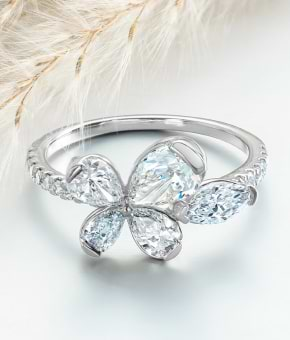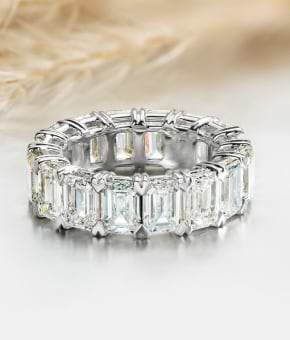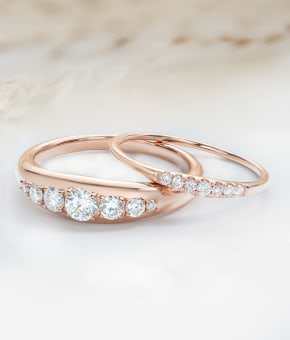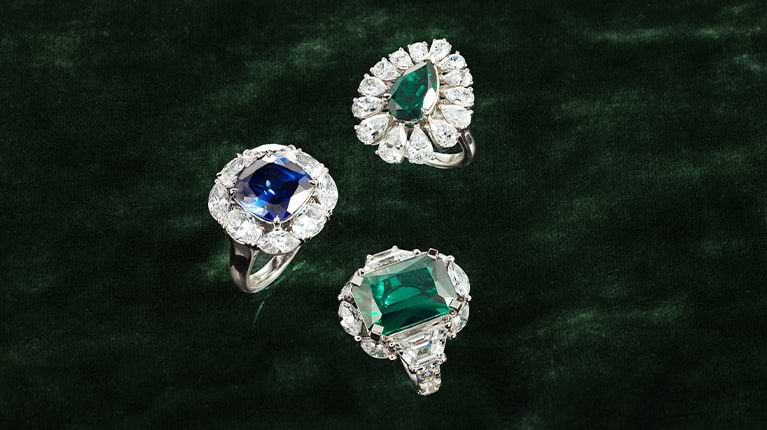

What Are Lab Grown Gemstones?
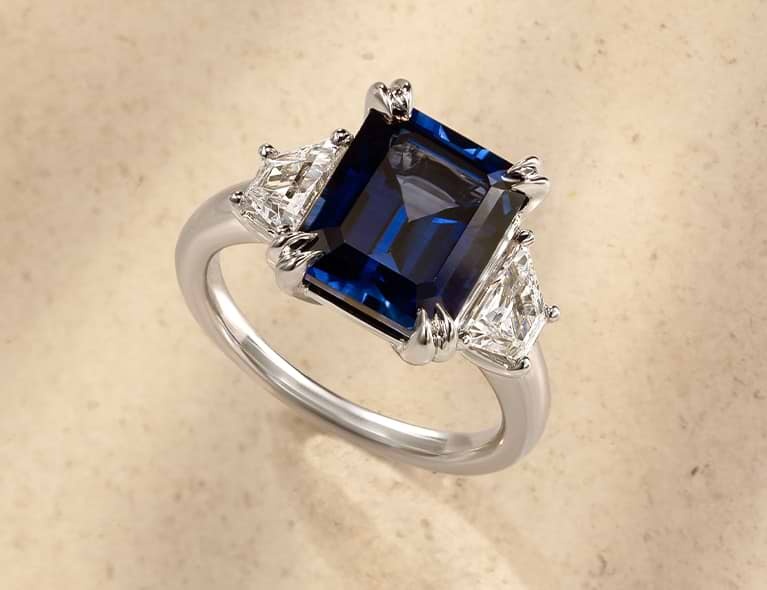
When purchasing gemstone jewelry like engagement rings, necklaces, and earrings, many people wonder if lab created gemstones are real? Lab grown gemstones, also known synthetic gemstones or cultured gemstones, are identical to natural stones. However, they offer an ethical and affordable alternative to natural stones, as they eliminate the environmental and social impacts associated with traditional mining practices.
Lab grown stones are created by replicating the natural formation of gemstones in a controlled environment. They are made using advanced techniques that simulate the conditions deep below the Earth’s surface, where natural gemstones are formed over millions of years.
Lab grown gems are initially in irregular or rough shapes and then cut and polished to optimize their brilliance and color. Lab grown gemstones can be created in various colors and gemstone types, including diamonds, emeralds, rubies and sapphires. A gem’s color depends on its trace elements and ability to refract light, which differentiates them in rarity and demand.
These lab-created gems have gained popularity in the jewelry industry due to their affordability, consistent quality and social responsibility. They are often indistinguishable from natural gems to the naked eye and require specialized gemological equipment to differentiate them.
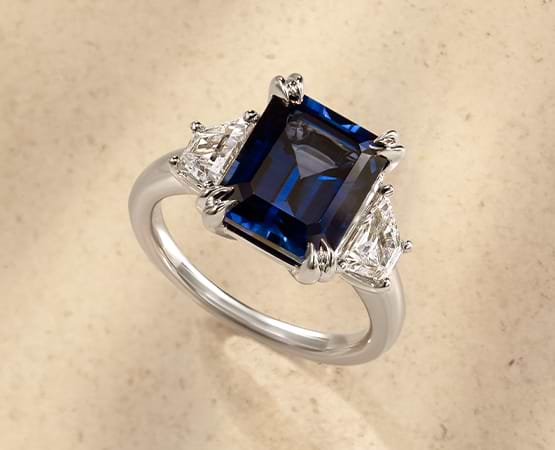
How Are Lab Grown Gemstones Made?
Creating lab grown gemstones involves a process called gemstone synthesis. The process begins with carefully selecting raw materials suitable for the desired gemstone. These materials can vary depending on the type of gemstone being created.
Seed crystals may be used as templates for growth, and a controlled growth environment is created within a growth chamber or reactor. These elements mimic the conditions necessary for gemstone formation, allowing the crystals to grow over time. Gem-quality crystals are produced through careful manipulation of temperature, pressure, and chemical composition.
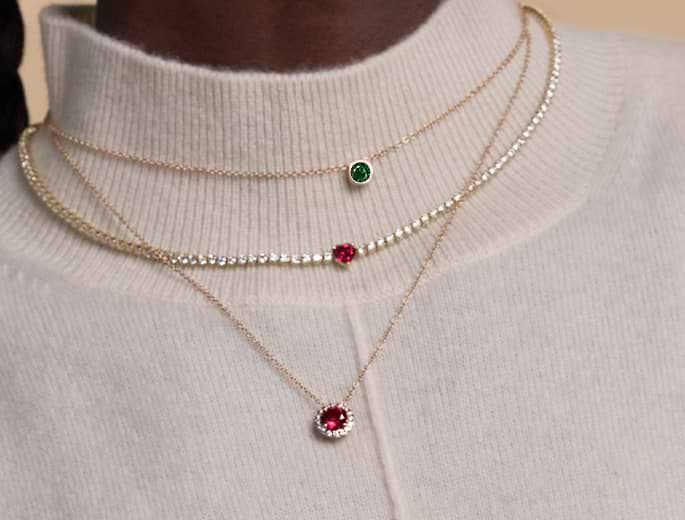
Why Choose Lab Grown Gemstones?

Lab grown gemstones are considered to be more ethical because they have do not rely on the harmful mining practices which can damage the environment and interfere with ecosystems in the areas that they are mined. Additionally, lab created gems are conflict-free. Creating them in a lab not only eliminates the involvement of warlords, drug cartels, and dictators in high conflict areas, but also provides meaningful, living wages to workers, following all local labor laws.
Another benefit of lab grown gemstones is that they offer consistent quality and clarity because they are produced under controlled conditions. These gemstones can be easily traced back to their origin and production process, providing transparency and reassurance to consumers.
Why Choose Lab-Grown Gemstones

Ethically Sourced
Lab grown gemstones are created in controlled laboratory environments, which can have positive environmental and social impacts.

High-Quality
Lab grown gemstones are carefully manufactured under controlled conditions, allowing for precise control over their color, clarity, and overall quality.

Affordable
With lab grown gems, you can often get larger or higher-quality stones at a fraction of the price of their natural counterparts.
Lab Created Gemstones vs. Mined Gemstones
| Lab-Created Gemstones | Mined Gemstones | |
|---|---|---|
| Formation Process | Created in a laboratory using high-pressure, high-temperature (HPHT) or chemical vapor deposition (CVD) methods | Formed naturally in the Earth's crust over millions of years |
| Origin | Synthetic | Natural, mined from the Earth |
| Availability | Can be produced in large quantities as needed | Limited by the availability of natural deposits |
| Cost | Generally less expensive than mined gemstones | Prices vary depending on rarity and quality |
| Quality | Consistent in terms of color, clarity, and size | Natural variations in color, clarity, and size |
| Environmental Impact | Relatively low impact on the environment | Mining can have significant environmental effects |
| Ethical Considerations | No ethical concerns related to human labor or mining practices | May involve mining practices with human rights and environmental concerns |
| Customization | Can be created with specific properties and colors | Limited to natural variations in mined gemstones |
| Lab-Created Gemstones | Mined Gemstones | |
|---|---|---|
| Formation Process | Created in a laboratory using high-pressure, high-temperature (HPHT) or chemical vapor deposition (CVD) methods | Formed naturally in the Earth's crust over millions of years |
| Origin | Synthetic | Natural, mined from the Earth |
| Availability | Can be produced in large quantities as needed | Limited by the availability of natural deposits |
| Cost | Generally less expensive than mined gemstones | Prices vary depending on rarity and quality |
| Quality | Consistent in terms of color, clarity, and size | Natural variations in color, clarity, and size |
| Environmental Impact | Relatively low impact on the environment | Mining can have significant environmental effects |
| Ethical Considerations | No ethical concerns related to human labor or mining practices | May involve mining practices with human rights and environmental concerns |
| Customization | Can be created with specific properties and colors | Limited to natural variations in mined gemstones |
What Are Birthstones?
Each month of the year is associated with a specific gemstone, deemed that month’s birthstone. Aside from the inherent beauty of each stone, birthstones are believed to bring out specific attributes for the wearer. They are also believed to bring good luck and protection if the person wearing them was born in the month corresponding to the gem. This makes birthstone jewelry the perfect personalized gift.
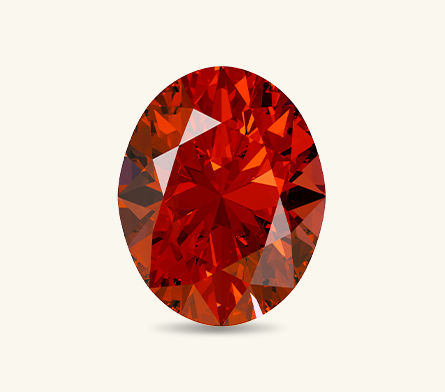
January - Garnet

Initially exchanged among friends in Ancient Egypt, the garnet is January’s birthstone. Renowned for its dark red color, it also appears in a range of hues. Believed to offer protection against harm or danger; the garnet symbolizes vitality, wealth, and love.
February - Amethyst
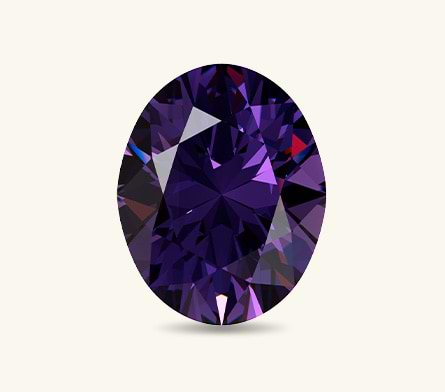
Known for its range of purple hues, February’s birthstone is amethyst. Due to its color, it has been traditionally associated with royalty and has adorned many historical jewelry pieces from the medieval era. Nowadays, amethysts are also associated with spirituality, mental clarity and healing.

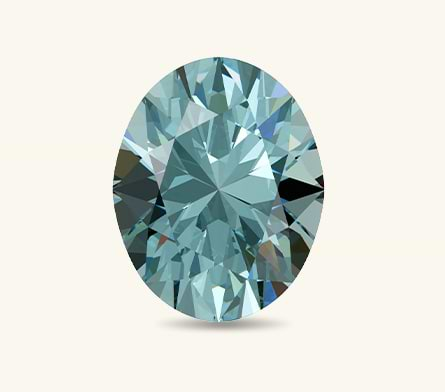
March - Aquamarine

Aquamarine, March’s birthstone, exhibits shades from pale blue to green. Its name, indicative of its connection to the sea, suggests protection for those who travel by water. Beyond safeguarding sea voyagers, aquamarine is also thought to enhance marital joy and boost intellectual capacity.
April - Diamond
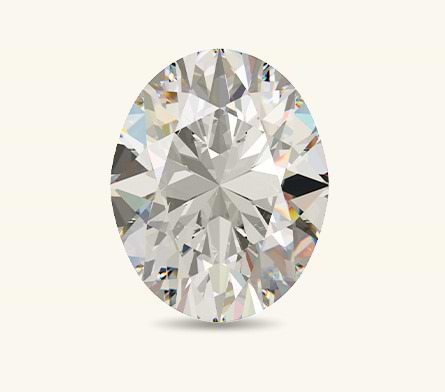
Diamonds, not only highly sought-after and among the most valuable gems, are also the birthstone for April. Celebrated for their unmatched brilliance and clarity, diamonds symbolize strength and everlasting love, attributes reflected in their enduring durability and lustrous shine.

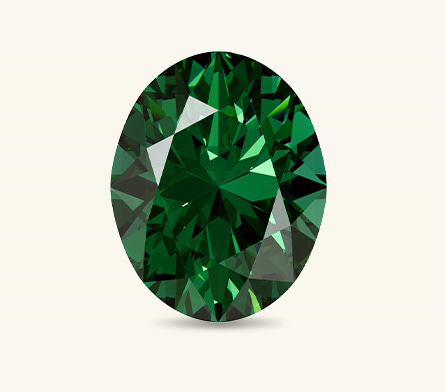
May - Emerald

Emerald, celebrated for its rich spectrum of green hues, stands as May’s birthstone and is among the most valued gemstones. It is thought to enhance intelligence, promote clarity of thought, and encourage healing. Emeralds are considered symbols of intrigue and romance.
June - Pearl
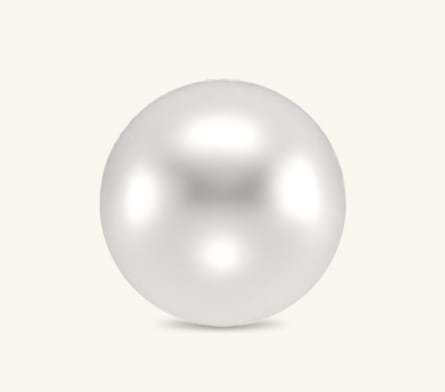
Pearls, the quintessential gemstone for June’s birthstone, embody honesty, wisdom, and purity. Often linked to divine powers, wearing pearls is believed to grant longevity and prosperity. While traditionally white, pearls are available in an array of colors, such as light pink and deep blue, maintaining their immense popularity over the centuries.

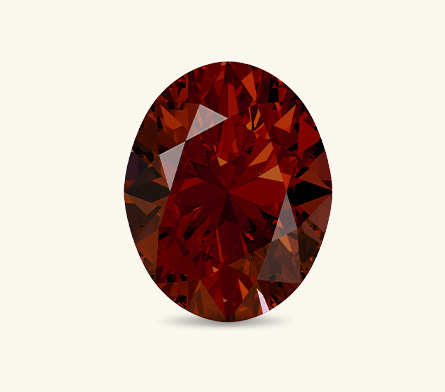
July - Ruby

Considered one of the most precious stones, Ruby is the birthstone for July. With its extreme durability and its variety of red shades, the stone has been thought to promote strength, help navigate moments of passion and calm the temper. This beautiful stone is also thought to be intimately connected with the human body and to bring good fortune to the wearer.
August - Peridot

Peridot, August’s birthstone, originates from meteorites in outer space, giving it the moniker of an alien gem. Characterized by its striking yellow-green color, peridot is thought to ward off evil and offer protection to its wearer, particularly at night. Its vibrant hue is also linked with prosperity and opportunity, making peridot jewelry a symbol of optimism.

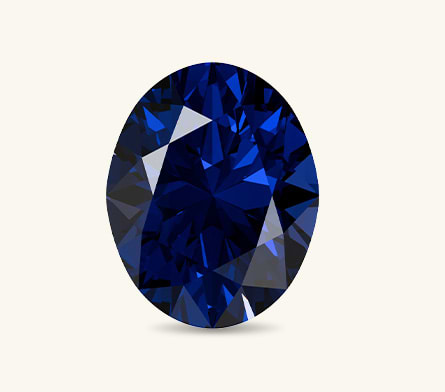
September - Sapphire

Sapphire, recognized as one of the most valuable gemstones, is the birthstone for September. It is thought to shield its wearer from physical injuries and has a long association with both medicinal and spiritual practices, often appearing in royal collections. The gemstone’s remarkable durability and array of pure hues, from royal blue to rose pink, render it a highly sought-after jewelry choice.
October - Opal
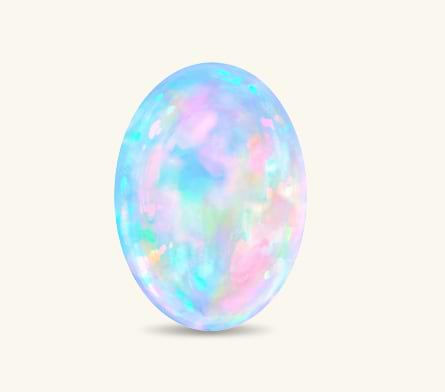
Thought by the Greeks to grant the power of prophecy, the magical opal is the birthstone for October. Due to their fiery glow and varying displays of color and movement, known as its “play of color,” opals are associated with light, magic, and healing.

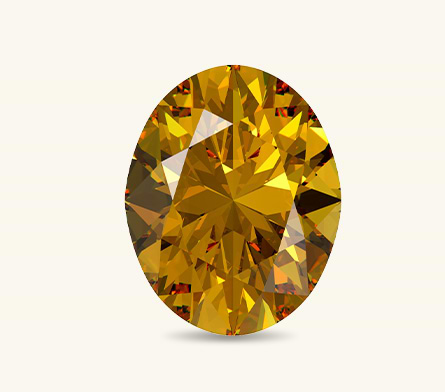
November - Citrine

Citrine, the birthstone for November, derives its name from the French word for lemon. Known for its association with happiness and healing, this gemstone features a spectrum of earthy tones from bright yellows to deep oranges, enhancing its popularity and versatility. Believed to provide relief and calm to those who wear it, citrine makes an ideal gift for someone special.
December - Topaz
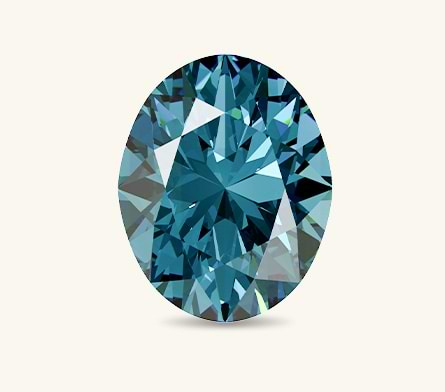
Topaz, which varies in color from rich blues to softer hues, is December’s birthstone. Historically believed to protect against illness and anger while promoting peace and clarity, this stunning gem continues to be linked with wealth and protection today. Apart from marking the fourth wedding anniversary, topaz is also a favored choice for jewelry, owing to its beauty and significance.

Companies create lab-grown gemstones through a process known as gemstone synthesis. It typically begins with the creation of a seed. Next, a mixture of chemical precursors is prepared, containing the required elements for the gemstone's composition. The seed and precursors are placed in a growth chamber under controlled conditions of temperature, pressure, and chemical environment. Through various techniques such as hydrothermal growth or vapor deposition, the gemstone slowly forms layer by layer over time, replicating the natural growth process.
A lab-grown diamond certificate is a document that provides important information about a lab-grown diamond. It serves as an official record that verifies the authenticity, quality, and characteristics of the diamond created in a laboratory environment rather than being mined naturally from the Earth.
The main difference between lab-grown gemstones and natural gemstones lies in their origin and formation process. Natural gemstones are formed deep within the Earth's crust over millions of years through natural geological processes. On the other hand, lab-grown gemstones are created in controlled laboratory environments and take only a few weeks or months instead of millions of years.
